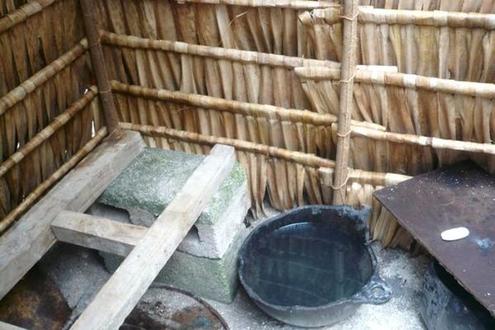Published on: 17/05/2013

North Tarawa is made up of a string of islets with a combined population of 6,102 (2010) and a land area of 15.26 sq.km. Previously about 64 per cent of people used the beaches and mangroves for defecation and dumping their rubbish.
UNICEF spokeswoman Nuzhat Shahzadi says that diarrhoeal diseases cause 15 per cent of the deaths of children under five in Kiribati.
In March 2013, North Tarawa adopted the Community-Led Total Sanitation (CLTS) approach following a training of trainers course conducted by Dr Kamal Kar. The CLTS pioneer wrote that he had convinced Kiribati President Anote Tong to set December 2015 as the target date for the whole nation to become open defecation free.
The villagers of North Tarawa dig shallow pits and use local materials like brick and coconut leaves to build the toilet superstructure. They keep water and soap in one corner. After using the toilet, the villagers sprinkle ash to stop the smell and flies getting in, and then keep it covered.
Ms Shahzadi said that the women and girls were very happy that they no longer have to go out onto the beach in the middle of the night if they need to use the toilet.
Sources: UNICEF, 11 May 2013 ; Radio New Zealand International, 13 May 2013 ; ABC Radio Australia, 14 May 2013